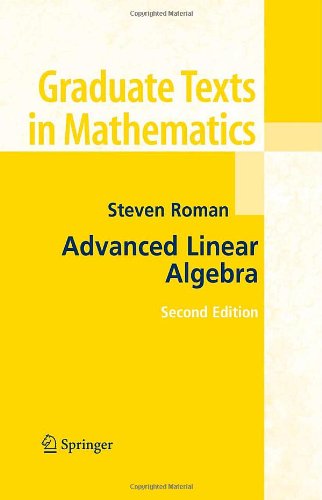

Most ebook files are in PDF format, so you can easily read them using various software such as Foxit Reader or directly on the Google Chrome browser.
Some ebook files are released by publishers in other formats such as .awz, .mobi, .epub, .fb2, etc. You may need to install specific software to read these formats on mobile/PC, such as Calibre.
Please read the tutorial at this link: https://ebookbell.com/faq
We offer FREE conversion to the popular formats you request; however, this may take some time. Therefore, right after payment, please email us, and we will try to provide the service as quickly as possible.
For some exceptional file formats or broken links (if any), please refrain from opening any disputes. Instead, email us first, and we will try to assist within a maximum of 6 hours.
EbookBell Team

4.0
6 reviewsMathematics Subject Classification (2000): • 15-01 Introductory exposition (textbooks, tutorial papers, etc.) pertaining to linear algebra
This is a graduate textbook covering an especially broad range of topics. The first part of the book contains a careful but rapid discussion of the basics of linear algebra, including vector spaces, linear transformations, quotient spaces, and isomorphism theorems. The author then proceeds to modules, emphasizing a comparison with vector spaces. A thorough discussion of inner product spaces, eigenvalues, eigenvectors, and finite dimensional spectral theory follows, culminating in the finite dimensional spectral theorem for normal operators. The second part of the book is a collection of topics, including metric vector spaces, metric spaces, Hilbert spaces, tensor products, and affine geometry. The last chapter discusses the umbral calculus, an area of modern algebra with important applications.
The second edition contains two new chapters: a chapter on convexity, separation and positive solutions to linear systems and a chapter on the QR decomposition, singular values and pseudoinverses. The treatments of tensor products and the umbral calculus have been greatly expanded and there is now a discussion of determinants (in the chapter on tensor products), the complexification of a real vector space, Schur's lemma and Gersgorin disks.